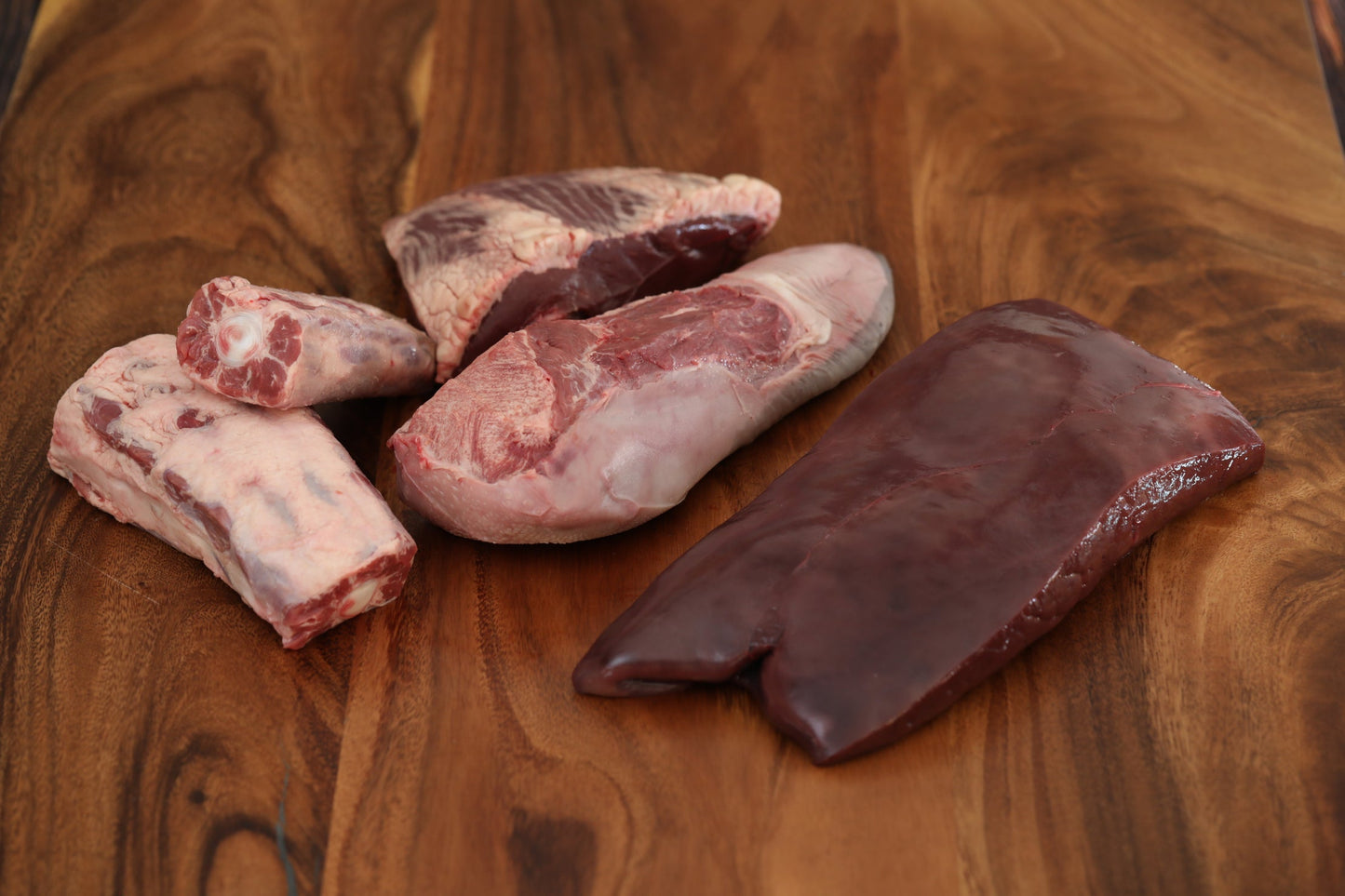Colorado Craft Beef
Offal Box
Offal Box
Couldn't load pickup availability
Want to start cooking like your ancestors? Nutritious beef offal is available year-round at Colorado Craft Beef. Each box contains 7-8 lbs of the following:
Each Box Includes:
One liver piece ~2 lbs.
One beef heart
One beef tongue
One oxtail

Incredible Flavor
The History and Flavors of Beef Offal in the United States
Beef offal, a term derived from the Old English word "offall" meaning "to fall off," refers to the internal organs and entrails of butchered cattle. In the United States, beef offal has a rich history and is gaining renewed appreciation for its unique flavors and nutritional benefits.
A Historical Perspective on Beef Offal in America
The tradition of consuming beef offal in America dates back to the early settlers and indigenous peoples. Native American tribes utilized every part of the buffalo, including the organs, which were often smoked, dried, or cooked in stews. This practice reflected a deep respect for the animal and an understanding of environmental sustainability.
During colonial times, beef offal remained a common part of the diet. Early American settlers, many of whom were of European descent, brought traditional recipes that included beef offal. Dishes such as liver pudding, tripe stew, and scrapple (a mixture of pork offal and cornmeal) were everyday fare, demonstrating the necessity of making the most of available resources and minimizing waste.
The Incredible Flavors of Beef Offal
Beef offal offers a rich tapestry of flavors and textures that can elevate any dish. Each type of organ provides a unique culinary experience:
- Liver: Rich and slightly metallic, beef liver is packed with nutrients. It can be sautéed, made into pâté, or incorporated into dishes like liver and onions—a classic American comfort food.
- Heart: With a firm, dense texture, beef heart is flavorful and lean. It can be grilled, braised, or added to hearty stews, offering a robust beefy taste.
- Tongue: When cooked properly, beef tongue becomes tender and succulent. It is often used in deli sandwiches, tacos, and traditional dishes like tongue stew.
- Oxtail: Ideal for slow cooking, oxtail imparts a gelatinous, melt-in-your-mouth quality to soups and stews, offering a deep, rich beef flavor.
Why You Should Give Beef Offal a Try
In recent years, beef offal has experienced a resurgence in popularity among American chefs and food enthusiasts. Here are a few compelling reasons to incorporate beef offal into your diet:
- Nutritional Powerhouse: Beef offal is incredibly nutrient-dense, providing essential vitamins and minerals such as iron, vitamin A, and B vitamins. These nutrients are vital for maintaining overall health and well-being.
- Sustainability: Using the whole animal, including offal, promotes sustainable eating practices by reducing waste. This approach honors the animal and supports environmentally conscious consumption.
- Culinary Adventure: Beef offal offers an opportunity to explore a wide range of textures and flavors that are often absent from conventional cuts of meat. For adventurous cooks, beef offal provides a chance to experiment with new recipes and culinary techniques.
- Cultural Connection: Cooking with beef offal connects us to our culinary heritage, allowing us to appreciate the resourcefulness of our ancestors. It also provides a link to various cultural traditions that have shaped American cuisine.
In conclusion, beef offal is not just a vestige of the past but a vibrant part of America's culinary landscape. Its rich history, remarkable flavors, and nutritional benefits make it a valuable addition to any kitchen. Whether you're a seasoned chef or a curious home cook, beef offal offers a unique and rewarding culinary journey. Next time you visit your local butcher or farmers' market, consider trying some beef offal and discovering the depth of flavor and tradition it brings to the table.

